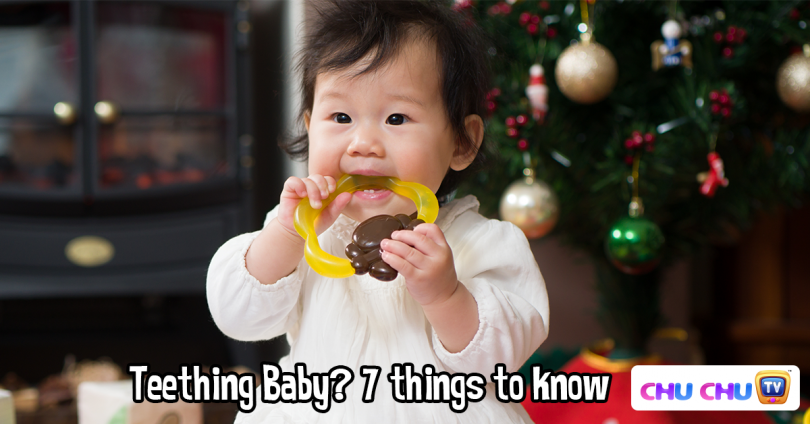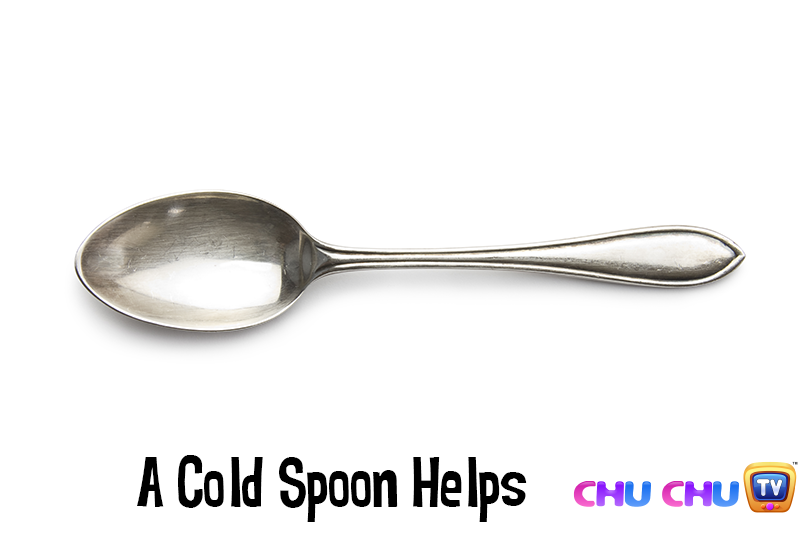Teething is one of the most important milestones for your baby in their first year. Not many parents know that the teething process begins when babies are still in the womb. At around 4-7 months after the baby is born, the teething process becomes visually evident, as the baby’s gums become red and swollen. This is the time when the baby’s first teeth are about to emerge. It is generally believed that the first teeth cut through the gums, but this is not true. The incisions that the teeth need to emerge are made via certain hormones produced by the body. The hormones work by switching off some cells in the gums, after which the cells die and separate, creating an opening for the first teeth to emerge.
Your baby’s first teeth will emerge at around 5 to 7 months, but it can also occur a lot early or as late as your baby’s first birthday. For most babies, teething is a painful process, as their body is undergoing significant changes at this time. The quantum of discomfort experienced will vary depending on the amount of pain a baby can handle. Apart from the redness and swelling of gums, there are other symptoms of teething that you can easily identify. For example, teething babies tend to drool excessively and they may develop a habit of chewing on things. They may become cranky, lose their appetite, become restless, experience sleep disturbances, and start crying more often. Teething has also known to cause elevated temperatures among babies. However, if there is high fever (above 100 degree Fahrenheit), you need to consult your pediatrician, as it may be due to other reasons such as infection.
Teething can be a challenging time for babies and their parents. Your baby will need additional love and care during this period and a lot of cuddling. You can use some tools and techniques to soothe the pain and discomfort being experienced by your baby. Here are some key teething tips for babies that you will find useful.
Gum massage:
This is an old-school technique that still works and can be utilized to provide relief to your baby. You need to inspect the gums of your baby and identify the swollen or reddened spots. Once you have identified the trouble spots, you need to place your finger on those spots and gently massage it. The pressure will provide temporary relief by reducing the overall quantum of pain. When using this technique, ensure that you have washed your hands before putting your finger inside your baby’s mouth.
Cold therapy:
Applying something cold to your baby’s gums can help provide relief from pain and discomfort. Many parents use a cold spoon and place its back side on the baby’s gums. The spoon has to be kept in the refrigerator for some time to make it cold. Do not put the spoon in the freezer, as it may stick to the skin and cause blisters. Also, the spoon has to be rounded and blunt to ensure there are no injuries in case the baby accidently bites the spoon. Chilled food items can also be given to the baby.
Breastfeeding:
When you breastfeed, your baby gets the essential nutrients and antibodies they need for healthy growth and development. The baby’s body will produce various hormones during the teething process, and breast milk will be critical in producing those hormones. Research studies have shown that breast milk also helps reduce inflammation. This would be useful for swollen and painful gums. Breastfeeding is naturally soothing for the baby and it will help reduce their teething-related stress and anxiety.
Chew therapy:
Babies are naturally programmed to chew on certain things to relieve their teething-related pain and discomfort. A wide variety of teething toys are available in the market, which you can use of for your baby. However, make sure that the teething toys are suitably designed to prevent the possibility of choking. Many parents use their own homemade stuff as a teething toy. For example, a wet washcloth can be kept in the refrigerator and later given to the baby. Water or breast milk or any other desired liquid can be used to wet the washcloth.
Art of distraction:
Every baby develops a liking for a specific thing. It can be a toy, something you say to the baby, a special sound you make, a gesture, a lullaby, a warm bath, etc. You can use these to distract your child if they are experiencing discomfort due to teething. This can be very effective for low-level teething-related pain and discomfort. It may or may not work in case the pain is severe.
Herbal and homeopathic solutions:
There are many herbal and homeopathic solutions that can be used for teething issues. Some of the most commonly used herbs for teething include chamomile, clove, rosehip, and catnip. Most of these herbs work by reducing pain and irritation. A number of homeopathic teething products are also available. However, these should be used only after consulting your pediatrician, as some of these have been reported to have side effects.
Pain relievers:
If nothing seems to work for your baby, your pediatrician may prescribe pain relievers. However, it’s important to remember that pain killers are only prescribed on rare occasions. If your baby is around 3 months of age, the pediatrician may prescribe acetaminophen (Tylenol). If the baby is more than 6 months old, Ibuprofen (Advil or Motrin) can be given. Pain killers are only to be taken on the prescription of a doctor and when all other home remedies have failed to provide relief to your baby.
Your baby’s teething troubles may subside after their first few teeth have emerged or it may continue for several more months. However, in most cases, the worst is considered to be over after the first teeth have emerged. But, don’t celebrate just yet, since the baby might again experience pain and discomfort when their molars start to grow. Molars are the large teeth that grow at the back of the mouth and the first molar teeth will emerge around 13 to 19 months. Molars are bigger than other teeth, so they cause pain and discomfort when they emerge for the first time. You can use the same techniques as described above to provide relief to your baby.

















Nice,my little boy is really suffering and I’m trying the wet material.Thanks…
Hope our article helped you @Naomi Ababio 🙂
Nice one indeed, my little boy is really in pains and some times I sing just to distract him.
oh, that’s a good idea @happiness..! 🙂